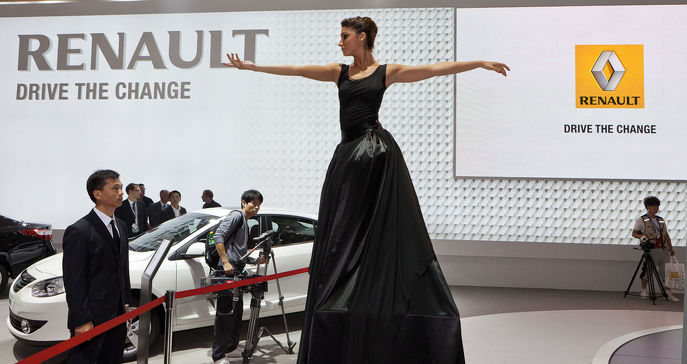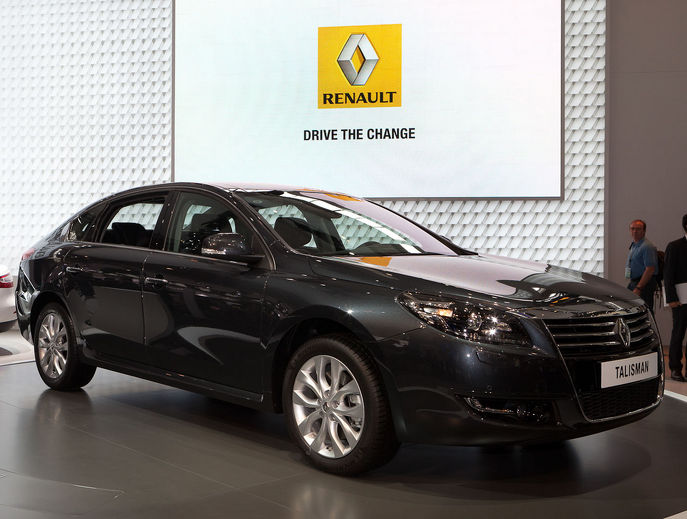2012 Beijing, Renault confirms its ambitions in China with the launch of Renault Talisman

Talisman, Renault's new flagship sedan for the Chinese market, embodies the "casual luxury" that Chinese customers have come to appreciate: value for money and luxury for daily life. Its elegant design and best-in-class interior are targeted at demanding young businessmen who are looking for a car that meets both professional and personal requirements. Talisman, produced in Korea at Renault Samsung Motors, will be exported to China starting in mid-June 2012 with a base price of 318 800 RMB (38 652 euros).

Renault's sales in China have increased more than fourfold since 2009, largely due to the success of Koleos, which received 8 awards in China.
With 24,100 units sold in 2011, Renault's sales in China have increased more than 60% compared to 2010. The SUV, Koleos, is proving extremely successful, with China now the car's number-one market. The range was broadened in 2011 with the introduction of Scénic, Laguna, Latitude, Fluence and Mégane CC.

Despite being a minor player on the Chinese market in the past, Renault intends to gain momentum in the next few years with an expanding network and the preparations for a long-term presence.
The launch of Talisman will help to accelerate the positive dynamic of Renault in China, where the distribution network will increase from 80 dealerships in 2011 to 170 in 2014. In China, the world's number one automotive market, foreign carmakers must produce locally in order to become important players. Within the next several years, as outlined in the "Drive the Change" mid-term plan which runs through 2016, Renault aims to establish an industrial footprint in China.

"The launch of Renault's flagship - Talisman in China underlines the importance Renault attaches to the Chinese market and our confidence in growth here," Renault CEO Mr. Carlos GHOSN said.

Renault and Nissan in China
In November 1993, Renault entered the Chinese market by signing an industrial partnership with China Sanjiang Space Group to assemble and produce the Trafic minibus through a joint venture, Sanjiang Renault Automotive Company (SRAC), in Xiaogan (Hubei province, 80 km from Wuhan). Production of Trafic stopped in 2003. In 1999, Renault began importing passenger cars and building up a sales network. In 2009, Renault launched the Total Ownership Experience program with an affordable 3-year warranty, and customer satisfaction with the sales experience increased and reached 95%.

The CBU Acceleration Plan introduced in May 2011 set ambitious targets:
| 2010 | 2011 | 2012 (target) |
2013 (target) |
|
| Renault volume | 15 | 24 | 42 | 48 |
| CBU market | 648 | 843,000 (+30%) | 1,054,000 (+25%) | 1,317,000 (+25%) |

Nissan began operating in China in 2003 with its partner, Dongfeng Motor Co, and launched its Infiniti brand in 2007. Nissan sold 94,000 vehicles in 2003. Nissan's sales in China (including Infiniti brand) increased by 21.9% in 2011 to 1,247,738 vehicles, including 808,440 sold by the Dongfeng Nissan JV (+22.4%) and 115,518 by Zhengzhou Nissan (+15.4%). In early 2012, Nissan launched the Venucia D50, the first model of local brand, Venucia. With 7.3% market share in 2011, China is now the number-one market for Nissan. Nissan plans to sell 2 million vehicles in China by 2015.

The Renault-Nissan Alliance
The Renault-Nissan Alliance is a strategic partnership between Paris-based Renault and Yokohama, Japan-based Nissan, which together sell one in 10 cars worldwide. The companies, which have been strategic partners since 1999, sold 8.03 million cars in 2011, including those from Russian partner AvtoVAZ. Since its founding 12 years ago, the cross-cultural Renault-Nissan Alliance has expanded significantly, particularly into emerging markets.

Diskusia k článku
Najnovšie galérie
































 Daniel
Daniel 
 Markko
Markko 
 Jean-Luc
Jean-Luc 
 Tomáš
Tomáš 
 Markku
Markku 